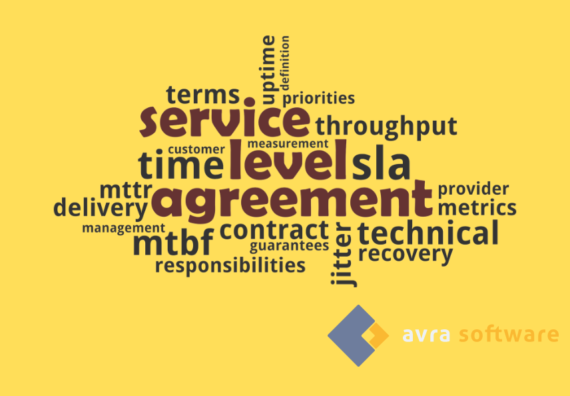
The Importance of Service Level Agreements in Enterprise System Maintenance
Service Level Agreements (SLAs) play a crucial role in ensuring effective maintenance of enterprise systems. An effective SLA should outline the terms and expectations for system maintenance, as well as define clear metrics and targets to measure performance. This guide provides valuable insights and best practices for creating an enterprise SLA that aligns with business objectives and promotes collaboration between IT service providers and enterprises.
Enterprise SLA: Aligning Service Level Agreement with Business Objectives
SLAs thrive when harmonized with an organization’s core business objectives. By forging this alignment, enterprises can prioritize system stability, availability, and performance targets that directly contribute to their overarching strategic goals and operational imperatives.
Collaborative Develompent: Embracing Collaboration for Effective SLAs
Effective Service Level Agreements emerge through the crucible of collaboration, fostering engagement and synergy between IT service providers and enterprises. Encouraging active involvement from all stakeholders ensures that the SLA encapsulates the multifaceted needs, expectations, and priorities of each party, leading to a shared vision of success.
Realistic and Attainable Targets: Setting Performance Expectations
Success hinges on the establishment of pragmatic performance targets within the SLA framework. Striking a balance between challenging and attainable, organizations must consider the service provider’s capabilities and available resources when defining targets. By cultivating a realistic mindset, both parties can sidestep the perils of undue strain and disillusionment.
Clear Roles and Responsibilities: Defining Accountability
Within the tapestry of an effective SLA, threads of clear roles and responsibilities must be intricately woven. From primary points of contact and escalation paths to incident management, communication, and reporting, delineating these vital aspects fosters accountability, ownership, and collaboration. A well-defined tapestry ensures smooth issue resolution and facilitates efficient collaboration between stakeholders.
Continuous Monitoring and Reporting: Ensuring SLA Effectiveness
To assess the SLA’s efficacy, a robust monitoring and reporting infrastructure must be in place. Regular reports offer valuable insights into system performance, incident trends, and adherence to SLA commitments. This transparency nurtures continuous improvement efforts and facilitates a shared understanding between the IT service provider and the enterprise, enhancing their relationship.
Regular SLA Reviews: Evaluating and Adapting
An effective Service Level Agreement thrives on continuous evaluation and adaptation. Regular reviews empower organizations to recalibrate the SLA’s parameters, ensuring its relevance and effectiveness amidst evolving business landscapes and technological advancements.
Framework for an Effective Service Level Agreement for Enterprise System Maintenance
Objectives and Scope: Enterprise SLA
Clearly define the objectives of the Service Level Agreement, such as ensuring system stability, minimizing downtime, and maximizing system performance. Specify the scope of the SLA, including the systems and components covered, as well as any exclusions.
Communication Channels: Effective Collaboration and Communication
Establish clear communication channels for reporting issues, updates, and progress. Determine the frequency and mode of communication, such as email, ticketing systems, or real-time notifications. Ensure that all stakeholders are aware of the communication channels and response time expectations.
Response and Resolution Timeframes: Timely Support and Issue Resolution
Define specific timeframes for response and resolution based on the severity level of incidents. For example:
Critical incidents: Immediate response (e.g., within 30 minutes) and resolution within a defined timeframe (e.g., 4 hours).
High priority incidents: Response within a defined timeframe (e.g., 1 hour) and resolution within a specified timeframe (e.g., 8 hours).
Medium priority incidents: Response within a defined timeframe (e.g., 4 hours) and resolution within a specified timeframe (e.g., 48 hours).
Maintenance Windows: Ensuring Service Availability
Specify scheduled maintenance windows during which system maintenance activities, such as updates or patches, will be performed. Communicate these maintenance windows in advance to minimize disruptions to service availability.
Incident Management Process: Effective Incident Resolution
Outline a well-defined incident management process, including steps for incident identification, logging, categorization, prioritization, and escalation. Clearly define roles and responsibilities of the support team members involved in incident resolution.
Performance Metrics: Assessing System Maintenance Effectiveness
Define measurable performance metrics to assess the effectiveness of system maintenance. Examples include system uptime, mean time to respond (MTTR), mean time to repair (MTTR), and customer satisfaction ratings. Clearly define the target values for each metric and establish a process for monitoring and reporting on them.
Change Management: Minimizing Risks during System Maintenance
Establish a change management process to ensure that any changes to the system are properly assessed, documented, tested, and approved before implementation. This helps minimize the risk of introducing errors or disruptions during system maintenance.
Review and Continuous Improvement: Enhancing SLA Effectiveness
Regularly review the Service Level Agreement’s effectiveness and performance against the defined metrics. Identify areas for improvement and take corrective actions as necessary. Encourage feedback from system users to ensure that their needs and expectations are being met.
Conclusion
The art of crafting effective SLAs for enterprise system maintenance requires embracing a pragmatic approach that emphasizes collaboration, practicality, and continuous improvement. By defining clear services and metrics, aligning with business objectives, fostering collaboration, and adopting a transparent monitoring and reporting process, organizations can navigate the intricate landscape of SLAs with confidence. Collaborative efforts between service providers and enterprises lead to enhanced service availability, effective issue resolution, and the successful achievement of business objectives.